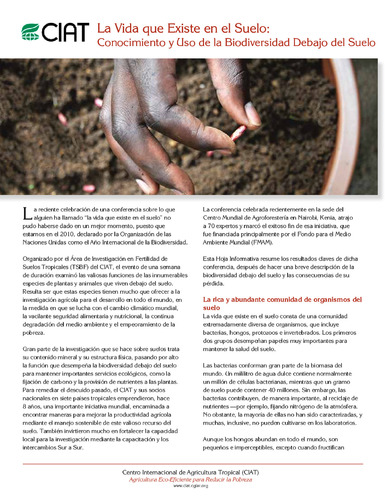The life in the earth: understanding and using below ground biodiversity = La vida que existe en el suelo: conocimiento y uso de la biodiversidad debajo del suelo
Given that the United Nations has designated 2010 as the international year of biodiversity, the timing of a recent week-long conference on what one author has called the “life in the earth”—could hardly have been better. Organized by CIAT’s Tropical Soil Fertility (TSBF) Research Area, the event examined the valuable functions of myriad plant and animal species that live below ground. It turns out that these species have much to offer agricultural research for development worldwide, as it contends with global climate change, faltering food and nutrition security, continuing environmental degradation, and worsening poverty. Much research on soil deals with its mineral content and physical structure, overlooking the role of below-ground biodiversity in maintaining important ecological services, such as carbon sequestration and the provision of nutrients to plants. To remedy past neglect, CIAT and its national partners in seven tropical countries embarked on a major global initiative 8 years ago, aimed at finding ways to enhance agricultural productivity through sustainable management of this valuable soil resource. They also invested heavily in strengthening local research capacity through training and South-South exchanges. The recent conference, attracting 70 experts to the headquarters of the World Agroforestry Centre in Nairobi, marked the successful conclusion of that initiative, which was funded mainly by the Global Environment Facility (GEF).

